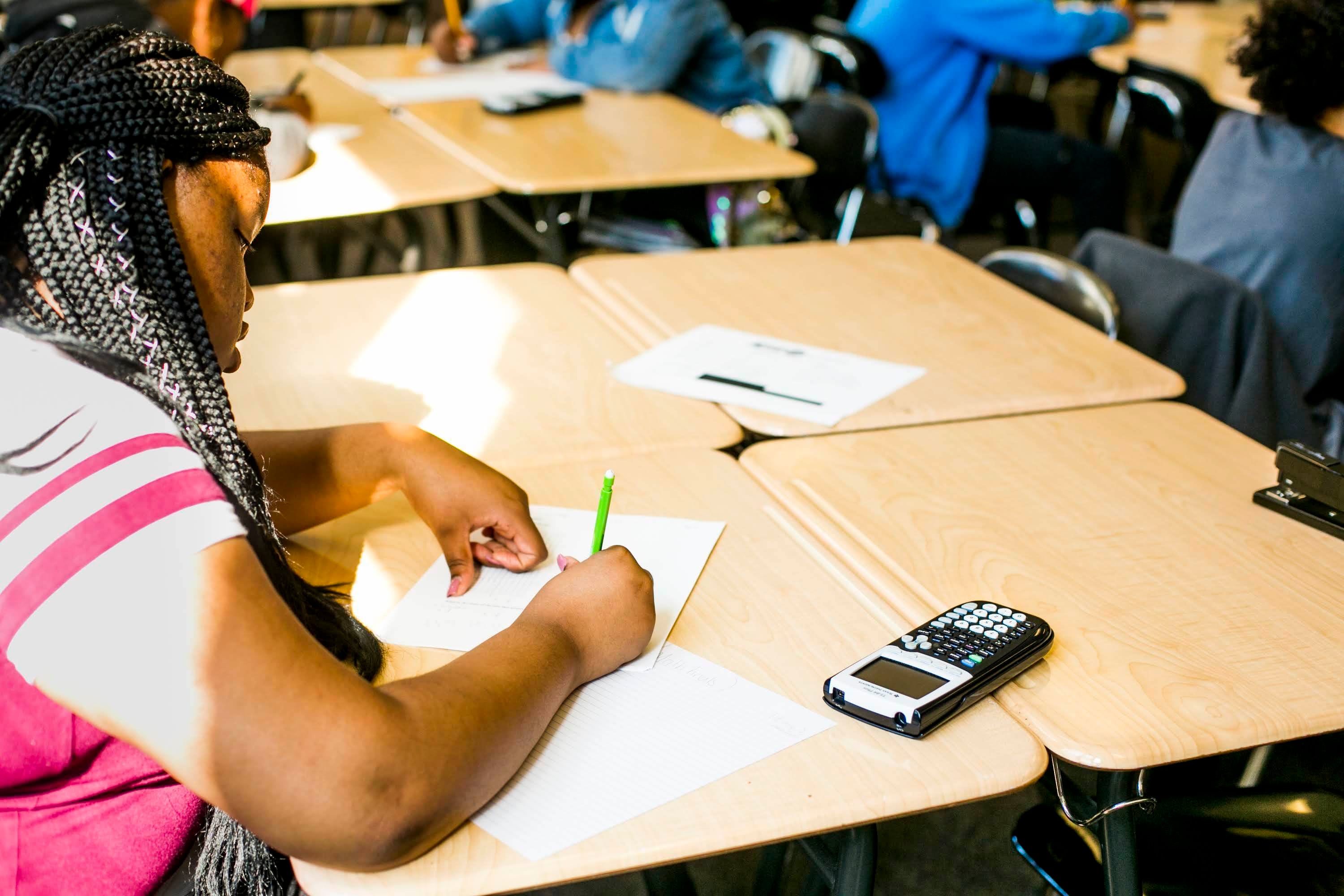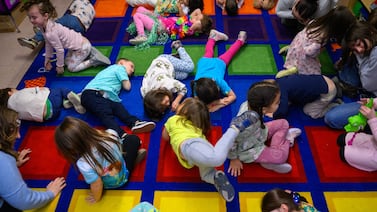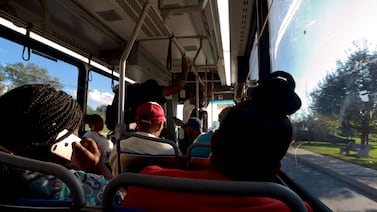Thanks to Michigan’s robust school-choice policies, Detroit’s roughly 100,000 public-school students are widely dispersed across a mix of charters, traditional neighborhood schools, and application schools that select their students.
But efforts to understand how school and student performance compares across these categories have been snarled by a surprisingly hard-to-answer question: Which schools have the highest concentration of the poorest students — the ones who are at the greatest disadvantage before they enter the classroom?
A growing line of research aims to tackle that question, taking a closer look at family income data to uncover significant differences among students whose families fit the broad criteria for economic disadvantage. One such study found that the Detroit Public Schools Community District’s neighborhood schools have higher proportions of students in deep poverty, compared with the city’s charter schools and application schools.
The study captured only a subset of Detroit’s schools, over a brief period of time. Still, researchers say the quest for more detailed data on family income has the potential to shape how schools are evaluated, staffed, and even funded, since students who face more disadvantages at home need more resources to get an adequate education.
“The deeper someone is in poverty, the more challenges they face, and that has a huge impact on a child’s ability to participate in their education,” said Jennifer Erb-Downward, a senior research associate at Poverty Solutions, an initiative at the University of Michigan.
Study uses parent surveys to get detailed income data
To identify economically disadvantaged students for its data collection, Michigan infers family incomes based on eligibility for public benefit programs, such as free school lunch or food stamps. Those measures can be imprecise: Students labeled as economically disadvantaged in state data may have family incomes anywhere from zero up to $51,300 per year for four people.
Finer-grained measures of student poverty aren’t usually available in Michigan — or in most other states — because education data systems typically aren’t linked with family tax returns.
Jeremy Singer, a postdoctoral researcher at Michigan State University, sought to fill that gap with a more detailed picture of the challenges Detroit students face at home and the types of schools they attend. His work received an honorable mention for the outstanding education policy dissertation award given by the American Education Research Association, a prominent association of education scholars.
Singer drew on a survey of more than 1,700 families whose students attended a school in the city in January 2022. Parents were asked about their income, education, and employment, and Singer linked their answers to data on their students’ schools.
The paper claims that DPSCD neighborhood schools enrolled the most students in deep poverty — meaning they had less than $15,000 in family income. Overall, the survey found that 49% of students attending DPSCD neighborhood schools were experiencing deep poverty, compared with 31% of charter school students and 23% of students at DPSCD exam schools.
The study does not identify poverty rates at specific schools, or examine how those schools perform academically. It was complicated by the pandemic, whose economic effects may have influenced the family incomes reported in the survey.
The study was also limited by low participation by charter schools — just 40% agreed to join the survey.
Even so, by looking at school enrollment data with added dimensions to measure poverty, “the study makes a valuable contribution to our understanding of who is choosing schools,” Joanne Golann, a professor of Public Policy and Education at Vanderbilt University, said in an email.
“If charters are attracting low-income families that are more stable, more educated, and more involved, this has implications for how we understand their success and their impact on neighborhood schools,” Golann said.
Why do some schools enroll more high-poverty students?
There are nearly 190 schools in Detroit, almost half of them charters. Of the district’s more than 100 schools, roughly two dozen require an application or an admissions exam.
How students come to be distributed among these types of schools is a point of focus in the debate over the merits of charter schools, and school choice policies broadly.
Charter school critics in Detroit have sometimes accused the sector of “cream skimming,” or boosting their average test scores by recruiting higher-income students, who face fewer barriers to success at school.
But Singer said that’s likely not the main reason that deep poverty is concentrated in neighborhood schools.
In follow-up interviews with survey respondents, he found that limited transportation and economically segregated social networks helped explain the differences.
Parents with the lowest incomes were less likely to own a car and more likely to prioritize the nearest school in order to minimize their children’s commute. DPSCD application schools don’t offer school buses, and many charter schools don’t either.
“If families were interested in choosing a school farther away, they needed to have the resources to do so,” Singer said. “Otherwise they may not even have considered it.”
Those patterns were reinforced by families’ social networks. Parents with higher incomes were more likely to say that their family and friends recommended charter schools or application schools.
Poverty differences complicate school comparisons
Singer said his findings about where deep poverty is concentrated argue for reexamining the claim that charter schools in the city produce better test scores.
Factoring test scores alone, Detroit charters slightly outperform district schools on Michigan’s standardized exam. Still, students in Detroit generally score much lower than their peers statewide. Statewide proficiency rates in English and math were 41% for third graders in Michigan last year.
In Detroit charters, about 12% of third graders were proficient in English last year, while 10% were proficient in math.
In DPSCD, the third grade math proficiency rate was 10%, and English proficiency was 9%.
But such comparisons may need to be reconsidered if that broad measure conceals the district’s larger very-high-need population.
“There are news stories going back decades (arguing that) charter schools are better” using test score comparisons, Singer said. “But we don’t have the data to make that claim. We have not adequately accounted for meaningful differences in student populations.”
To account for those economic differences, researchers and policymakers have looked at charter school enrollment lotteries, where applicants are selected at random. That way, researchers could be confident that factors like family education levels or income aren’t at the root of any differences in test scores.
But enrollment lotteries are rare in Detroit, where schools of all types generally struggle to enroll enough students. One lottery study of National Heritage Academies, a for-profit charter network, looked at schools in Detroit and across Michigan and found that students who benefited most from attending NHA schools had higher family incomes and lived outside cities.
Attention to deep poverty could benefit Detroit schools
Educators in Michigan agree that it takes extra dollars to provide an adequate education to students facing economic disadvantages.
The state already provides some additional funding for these students, but in 2018, a team of nonpartisan experts recommended that the state sharply increase its funding for students considered economically disadvantaged — and provide even more money for students facing “high need poverty.”
Detroit schools, including charters, would likely be among the largest beneficiaries in the state of such a policy. Singer’s research suggests that DPSCD would receive the biggest boost of all.
Charter leaders, presented with study findings, argued that Detroit students are generally more similar than different.
“Every school in Detroit has a vast majority of students who live in economically disadvantaged conditions,” said Dan Quisenberry, president of the Michigan Association of Public School Academies.
Research could have other applications
Education researchers say more study of differences between economically disadvantaged students is needed — and not just to clarify debates about school choice.
For instance, efforts to measure teacher effectiveness often factor in broad measures of students’ economic advantage, such as their eligibility for free lunch. “This may ignore important differences among students who are all eligible” for free lunch, said Philip Gleason, an education researcher and senior fellow at the research firm Mathematica.
Within districts, the data could be used to distribute resources to schools with more severe poverty. Nikolai Vitti, DPSCD superintendent, said Singer’s research “reaffirms why we are shifting more of our limited resources to neighborhood high schools and larger neighborhood K-8” schools.
But getting the kind of detailed data on incomes that Singer cites will likely be difficult, as long as it requires using painstaking surveys.
Singer says Michigan policymakers could accelerate the process by linking tax data with education records. Doing so would require political support and could raise privacy concerns.
But it has been done: In 2021, New Mexico passed a law allowing officials to link education and tax data.
The new information will be used to increase funding to schools with higher rates of extreme poverty.
Koby Levin is a reporter for Chalkbeat Detroit covering K-12 schools and early childhood education. Contact Koby at klevin@chalkbeat.org.







